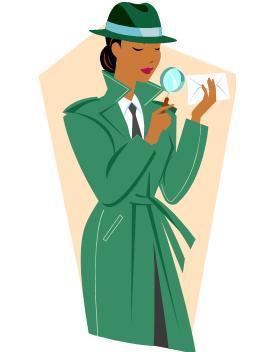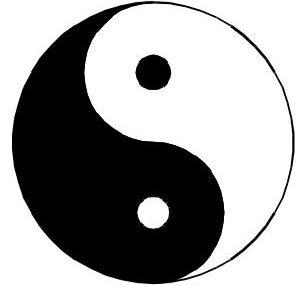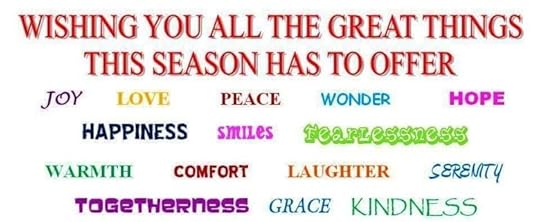Pat Bertram's Blog, page 74
December 30, 2020
Life’s Confusion
The other night I talked to Jeff’s photo, as I sometimes do. I think it was Christmas night, and I was feeling a bit lost. And confused. So much of what has happened to me in the past twelve or thirteen years (the years of his dying and the years of my grief) still doesn’t make sense, but for the most part, I just go on about my life, concentrating on the day I am living.
Even so, sometimes, the confusion makes itself felt. For example, I really do like my house, my life, having a place to call home, but it all came about because Jeff died. If he hadn’t died, my life would have been completely different. I wouldn’t have missed this current life, of course, because I would never have known it existed, but still, the confusion is there.

I also continue to be confused about life and death, what it is, where we go, and all that, but again, generally I don’t think about it, just take it as a fact that he is gone and I am not.
And I’m still confused about a lot that happened that last year we were together. I don’t worry about it much — after all, it was a long time ago — but there is one episode that still makes me feel ashamed.
When people talk about those who care for their dying spouses, we imagine tender care, patience, and the warm glow of love. After all, that’s how it’s portrayed in movies, and movies are a reflection of real life, right?
Well, no. Many of us endure a love/hate relationship — we want to be with them and savor ever moment we have, yet at times we can’t stand the stress, the turmoil, the pain (theirs and ours), the sleepless nights and all else that goes along with trying to survive while your mate is struggling with death. We can’t always be the person we want to be, and even worse, as the months pass and the exhaustion and numbness take hold, we become someone we’d just as soon pretend never existed.
Even during a year where death hovers, life still reigns. So we live. We get impatient and frantic and frustrated and surly. And, even though sometimes we wish they’d die and get it over with, we never really believe they are going to die. We forget that each day might be the last, and so we forget to be patient and kind.
It’s one of those time that still shames me. He was looking at Google Earth and visiting all the places he once knew. I listened to his stories of old Denver for a while, and then suddenly I couldn’t stand it anymore, and I got impatient and left. I still don’t know why I felt that way, so that adds to the confusion. There wouldn’t have been a problem if not for Death. If there had been another time, I would have made a point of drawing up a chair and soaking in the time together, but there wasn’t another time. And I am left with the knowledge of how I am not always the kind and patient and generous person I wish to be.
And I am left with confusion.
So much of that time is gone, out of mind. Even if I wanted to remember it, I couldn’t. I can’t even, at times, remember being with him, even though he was the most important person in my life for decades. Even after he died, he continued to be important because of the grief I experienced.
I don’t think I will ever truly find my way out of the confusion. Despite all my studies and experience and contemplation of dying, death, and grief, so much can’t be known. Most of the time, I can live with the confusion in the same way I live with the knowledge that one day I will die. It’s there, but doesn’t have any meaning on a day-to-day level.
Until, of course, there comes a day when the confusion wells up, and I end up pretend talking to Jeff.
***

Pat Bertram is the author of Grief: The Inside Story – A Guide to Surviving the Loss of a Loved One. “Grief: The Inside Story is perfect and that is not hyperbole! It is exactly what folk who are grieving need to read.” –Leesa Healy, RN, GDAS GDAT, Emotional/Mental Health Therapist & Educator
December 29, 2020
Searching for a Tagline

I’ve been struggling with my new website, and I’ve mostly learned how to use the website builder, or at least as much as I need to know for right now. I’ve pretty much set up the bones of the site; now it needs to be fleshed out with information about me and my books. The book part, while time-consuming, is easy. It’s just a matter of coping and pasting the blurbs and such that were on the old website.
The “about” needs to be updated. I can no longer brag about being a nomad as I did in the previous bio since I am as unnomadish as a person can get — the furthest I’ve been from home in the past few months is a mere handful of miles. But the bio is really just a matter of finding something to say about me. Whatever it is, it won’t be on the homepage; people will have to go looking for it, so it doesn’t have to be as catchy as some of the other parts of the website, such as the tagline.
Taglines are hard. You have to give the essence of your books or yourself in a matter of a few words. This morning I woke up thinking that “Author of provocative fiction and profound works of grief” would be good, but a few hours later that tagline seemed as if it would be too off putting for people who are simply looking for a bit of information about grief. Of course, search engines wouldn’t be sending them to my website for such information — they’d send grievers to one of the grief posts on my blog. Chances are, the only people who would end up at the website would be those who were specifically looking for information about me.
More importantly (to me anyway), I’m trying not to second guess myself too much and to stick with the first ideas that come to mind. Still, I want to hook people into staying, not push them away with pedantry.
So, what about “Author of intriguing fiction and insightful works about grief”?
Originally, I just used, “Author of fiction and non-fiction,” but that is boring and uninspiring to say the least.
If you have any suggestions for a tagline, I’d be glad to hear it.
***

Pat Bertram is the author of Grief: The Inside Story – A Guide to Surviving the Loss of a Loved One. “Grief: The Inside Story is perfect and that is not hyperbole! It is exactly what folk who are grieving need to read.” –Leesa Healy, RN, GDAS GDAT, Emotional/Mental Health Therapist & Educator
December 28, 2020
Connecting to the Past

I grew up with a hand-me-down life — most of the clothes I wore were hand-me-downs from a much older, much shorter, and much thinner cousin, which, as you can imagine, gave me a bad body image way before such things were fashionable. (It’s funny to think that people don’t do that anymore — hand down clothes — except perhaps for baby clothes. Instead, we donate garments that no longer please us to the various world-wide thrift stores, and end up destroying the cloth and clothing industries in the very areas that need such industry.) I probably sound ungrateful, but truly, back then I was glad for such “new” clothes, even if they had to be altered to fit me.
I also got my cousin’s outgrown books, which did a lot to counter whatever harmful connotations her clothes might have had. Then, as now, I read in the same way I breathe — inhaling without thinking. It’s just what I do, what I have done from the moment I learned how to read. (I know there must have been a time when I didn’t know how to read, but I don’t remember such a time, nor do I remember learning to read. It’s as if I truly have always read.)
Those books from my cousin were the staple of my early life. I went to the library often during the winter and every day during the summer, but during the times I couldn’t get library books, such as when I was sick, I reread my hand-me-down books. I also read my parents’ books they kept on the bookhselves in the room we called the library. This library was a separate room from the living room, and had shelves for books, my mother’s desk, and the chiming clock that formed part of the soundtrack of my early life. (I even read some of my mother’s old nursing textbooks, and will never forget the garish photos of various organs and diseases. I still have nightmares about the smallpox picture.)
I had most of the Judy Bolton series back then. I don’t remember getting rid of them, but I must have cleared them out during a move at some point. Still, I remember those books with the mottled pink cover (the Nancy Drew covers were the same, only they were blue) as if I’d seen them just the other day.
The point of all this nostalgia is that I found a few of the books on the Gutenberg Project website. I certainly hope the site is as they claim, that these books are in the public domain, because I downloaded the few Judy Bolton’s that I could. And now I am reading them.
I’ve always known that books connect us to the others who have read them, a much deeper connection than from writer to reader. I’ve known that certain books connect us to the ages — to the people long dead who also read those very stories.
What I didn’t realize until rereading these Judy Bolton books is how books can connect us to our past selves.
Although I don’t remember the stories so much, I remember the characters, the feel of the stories, and the feel of the books themselves. And I remember reading them.
I’m holding a Nook in my hand instead of the hard back book, but the words are the same. And I feel . . . timeless. The person I am today is reading the same book I last read fifty years ago. It seems miraculous. The older person who lived so much during the intervening years — loving, sharing, grieving — is, through these familiar words, connected to that girl child who could only dream and hope of a life that was to come.
I imagine there will come a time, perhaps fifteen to twenty years from now when I am elderly and frail and rereading these books, that I will look back to me on this day and think the same of this me as I think of that little girl me — that I was young and still full of hopes and dreams.
I imagine I will think back to all that has connected me to myself through the years, and I will be grateful for all breaths I took and all the books I have inhaled.
***

Pat Bertram is the author of Grief: The Inside Story – A Guide to Surviving the Loss of a Loved One. “Grief: The Inside Story is perfect and that is not hyperbole! It is exactly what folk who are grieving need to read.” –Leesa Healy, RN, GDAS GDAT, Emotional/Mental Health Therapist & Educator
December 27, 2020
Web Building
I spent a good part of the day working on my website. It had to be updated anyway because of my new book, Bob, The Right Hand of God, but this is more than a simple update. Because of Adobe Flash being discontinued, my ancient website is becoming defunct (even though my site was a plain old non-flash site, with stationary photos and text), I have to learn a new website builder and redo the entire site.
It’s not really all that complicated; it’s more of a matter of learning how to find what I need and to decide what I want to say. To that end, I looked at various examples of author websites, and though it didn’t really help much, it made me feel as if I were doing something to further my “author-ity.”
One of the problems I have that other authors don’t is the variety of genres I work with. Most authors stick with fiction or non-fiction. If fiction, they write one sort of novel, such as romances or mystery or fantasy. If non-fiction, they stick to a certain topic. Although I do stick to one topic with my non-fiction books — grief — my novels span multiple genres.
Back when I was learning to write, all the books said to write in a recognizable genre. You can put romance elements in mystery, or mystery elements in romance, but basically, you need to brand yourself by making sure your stories are predominately one thing. Well, I didn’t do that — I can only write the books that are in my head, after all, and those books ramble all over the genre spectrum. But now I know why it’s important to do what the others said to do and not what I did — it makes it a whole lot easier to figure out what to focus on when promoting yourself, and especially in figuring out what to focus on for a website.
Do I focus on grief? After all, my grief books sell more than the others.
Do I focus on the fiction? After all, most of my books are novels.
For now, I’m doing what a lot of authors do — put up a photo of myself and a gallery of my book covers on the home page, and then feature each book on a separate page.
The hardest part is to find the site in progress. If I go to the web builder page, they don’t seem to recognize what I’ve already done, so I have to click the link in the email they sent when they informed me of the pending changes. (From what one of the tech people I talked to said, I gather there are two distinct builders on my site — a free one that they gave me in exchange for the defunct one, and one I will have to pay for after an introductory period. And it’s the free one that’s hard to find.)
Mostly though, it’s just a matter of doing the work. Luckily, the old site is still up, so I have time to figure it all out and then to do what I need to do to build my website.

***

Pat Bertram is the author of Grief: The Inside Story – A Guide to Surviving the Loss of a Loved One. “Grief: The Inside Story is perfect and that is not hyperbole! It is exactly what folk who are grieving need to read.” –Leesa Healy, RN, GDAS GDAT, Emotional/Mental Health Therapist & Educator
December 26, 2020
Driving Nowhere
When I moved here, the alley behind my house was muddy with deep ruts, which was a big factor (next to cost) in trying to fix the old garage. If the old garage could have been fixed, then I would have graveled the driveway leading out to the paved street and not had to worry about the mud.
Well, fixing the garage didn’t work out, so it got torn down.

By the time the new garage was built, the alley was graveled, which made for a pleasant egress from my new garage.
Unfortunately, the gas company had to dig up the alley to put in new gas lines, and so once again, the alley is muddy with deep ruts. (We got a LOT of snow last week, and now it’s melting fast.)
That mud and those ruts are intimidating since I drive a small car, but more than that, I don’t like the idea of muddying up my new garage.
So today, which was supposed to be a driving day (to keep the bug exercised and the battery charged up), I opened the garage door, got in the car, started it, and . . . drove nowhere. I just sat there with the car running, and dreamt of magical road trips and wondrous sites and sights.
Oddly, I don’t really mind not traveling, even though it was an on and off again way of life for many years. Nothing appeals to me so much as spending the night in my own bed in my own bedroom in my own house.
Work around here has come to a standstill — first because of the snow, next because of the holidays, and finally because of the mud — but once I have pathways meandering through my yard, with various plants — trees, flowers, bushes — in strategic areas, there’s a chance that strolling through my own yard will fulfill some of that desire for new sights. Plants are ever changing, and there always seems to be something new to look at.
Meantime, when I can’t actually get in the car and drive out into the country for a short jaunt, sitting in the car and driving nowhere but into my own dreams seems to be an adequate substitute.
***

Pat Bertram is the author of Grief: The Inside Story – A Guide to Surviving the Loss of a Loved One. “Grief: The Inside Story is perfect and that is not hyperbole! It is exactly what folk who are grieving need to read.” –Leesa Healy, RN, GDAS GDAT, Emotional/Mental Health Therapist & Educator
December 25, 2020
Wishes for You
Merry Christmas, Happy Holidays, Season’s Greetings, Peace and Joy, Warmest Wishes, Happy Solstice, Good Yule, Noel, Good Cheer, Good Tidings, Merry Xmas, Happy Holy Holidays, Warm Greetings, Holly Jolly Holidays, Let it Snow, Ho Ho Ho, Feliz Navidad, Joyeux Noel, Mele Kalikimaka, Buon Natale, Buone Feste Natalizie, Feliz Natal, Nollaig Shona, Fröhliche Weihnachten, God Jul, Wesołych Świąt, as well as any other greeting you use to acknowledge this special day.
***
December 24, 2020
Judgement Call
I sometimes watch television with the woman I sit with several hours a week, and the show of choice is Judge Judy. The most annoying things, of course, are the commercials. The political ads were horrific, but thankfully they are done with, and by the time they return, I’ll probably be finished with this job and with television. Almost as bad as political ads are the drug commercials, with all the happy people dancing around gleefully while the life-threatening side-effects are listed. Most annoying are those sleazy lawyers promising to get me big bucks if only I could get injured in a car accident.
I suppose the lawyer ads make sense, since this show is partly about the law. It’s mostly, of course, about Judge Judy and her sharp bluntness. That sounds oxymoronic, but she is so very blunt in her speech and so pointed in her remarks that her bluntness comes across as sharp. Not just smart as in keen but sharp as in cutting.
As I watch her, I wonder what it would be like to be so very direct. I realize she is a judge, and that it is her show and her courtroom, so what is entertaining coming from her mouth would be downright rude and hurtful coming from me. And above all, I strive not to be rude or hurtful or unkind in any way. If people annoy me, I stay away from them. It gains me nothing to get in their face and tell them what I think of them. Besides, it would probably make me feel worse than it would make them feel.
As I watch the people who stand before the judge, I wonder how I would act if I were one of them. Would I be able to stand there and keep my mouth shut while my opposite number is spouting lies? Would I be seething at the injustice? Would I protest out of turn? Would I be too intimidated to speak up when allowed? I have a hunch I’d be one of those who try to explain too much, to give the context and other background information. A lot of what happens to us can’t be fit into a yes or no situation. There are always gray areas. And yet often, those folks, whether defendant or plaintiff, are only allowed a single word — yes or no.
But none of that matters. I truly doubt I would ever go to a small claims court, would ever apply to be on judiciary show, would ever get a lawyer to try to resolve any situation those litigants get into.
If I lend someone money, I assume it’s lost, and if they pay it back, great. If they don’t pay it back, I will nag them, and if I still can’t get the money back, eventually give that up, too.
I have seldom gotten a deposit back from a landlord — they have almost always managed to find a way to keep it — so I made sure any deposit was an amount I could afford to lose. Now that I own a house, I don’t have that sort of problem, for which I am eternally grateful.
I do have a contractor who doesn’t always show up when he says he will, but I couldn’t sue him even if I wanted to (which I don’t) because I don’t have a written contract. And anyway, we’ve become friends. Whenever I need something done immediately (like a leaky toilet) that goes beyond what would be contracted for, he does without question. A friendship like that helps take some of the stress out of home ownership and is not worth jeopardizing.
I’ll probably never have a property line dispute — the first thing I did when I got here was to have my property surveyed, and it is now part of the legal definition of the place.
I’ve been bitten by dogs, my car has been hit by other drivers, and I’ve slipped and fallen and been badly injured, and never have I sued. In fact, that’s a matter of contention between me and a friend because my not doing so comes across as my being contrary rather my making a judgement call. And maybe I am contrary, but I know for sure I’d rather end a fender bender (even when it is the other person’s fault) with a hug rather than an appearance before a judge.

**

Pat Bertram is the author of Grief: The Inside Story – A Guide to Surviving the Loss of a Loved One. “Grief: The Inside Story is perfect and that is not hyperbole! It is exactly what folk who are grieving need to read.” –Leesa Healy, RN, GDAS GDAT, Emotional/Mental Health Therapist & Educator
December 23, 2020
Feeling the Feelings

Sometimes when I speak or write, a truth comes out that I didn’t know I knew, but I’ve come to trust those words as if they were . . . well, true.
A few days ago, I was talking to a friend about emotions that are considered negative, such as sorrow and anger and loneliness. She said she didn’t have anyone but me to talk about such things with because other people want her to feel more positive.
I heard myself saying, “There are no positive or negative feelings. There are simply feelings.” And I realized that’s true. What we do with those feelings — such as take out our anger on our families — could be construed as negative, but the feelings themselves have no positive or negative connotations. Like in physics. Protons have what is called positive charge while electrons have what is called a negative charge, but there is no good/bad connotation for those names. As far as I can understand, they are more about push/pull than what we think of as positive and negative. Batteries have a positive and negative side, but again, but sides work together as a whole rather than one side being good and the bad, or one being right and the other wrong.
It’s the yin/yang of life — the cosmic duality, the two opposing and complementing principles that guide the universe and all things in it.
And so it is with feelings. We feel happiness and sadness, anger and fear, pride and shame — sometimes both sides of the feeling at the same time. Other humans are always trying to categorize us in some way, not just by our vocation or avocation (writer, scientist, teacher, parent) but also what sort of personality we have (optimistic, pessimistic, melancholic) as well as our political and religious beliefs, but we are not any one thing.
The truth is, we are not one-dimensional creatures; we are each a universe unto ourselves and have an infinite number of sides. We aren’t limited to the so-called “positive” feelings; we have a wide-range of feelings that we can — and should — feel.
It’s not important what we feel at any given moment. It’s only important that we feel. (Even if we’re not actively feeling anything, we’re feeling something — serenity, perhaps.)
Even the less compelling emotions, the less admirable ones such as envy or loathing are important to feel if we’re feeling them, if for no other reason than to figure out why we feel such things. Do we want to be more like those people we envy or loathe? Do we see ourselves in them? It’s only after identifying the reason for the feeling that we can take action to neutralize the effect of the feeling. But the feeling itself is merely a feeling. It is not a judgement call.
On a more personal level, grief for a life mate/soul mate might be uncomfortable for others to witness, but that grief belongs to us. We need to feel it; it’s how we become what we need to become to continue living in this world without our mates. We don’t need to figure out why we are feeling the chaotic mix of emotions that comprise grief. We know what caused it — the death of a person dear to us. We just need to feel what it is we are feeling.
Feeling a whole range of emotions teaches us to be compassionate and understanding of others. It allows us to accept compassion and understanding from others. It helps us understand (and perhaps even create) ourselves. It help us take action when necessary. It helps us survive in the wilderness of human interactions.
So, whatever I am feeling, I let myself feel it. Whatever you are feeling, just feel it. Don’t let anyone try to squelch your feelings.
Feeling the feelings is better for all of us in the long run.
***

Pat Bertram is the author of Grief: The Inside Story – A Guide to Surviving the Loss of a Loved One. “Grief: The Inside Story is perfect and that is not hyperbole! It is exactly what folk who are grieving need to read.” –Leesa Healy, RN, GDAS GDAT, Emotional/Mental Health Therapist & Educator
December 22, 2020
A Toast
Some of the peripheral events precipitated by The Bob can be amusing at times. Oh, I know the disease itself isn’t amusing, nor are the deaths stemming from it, but you have to admit, that being required to wear masks to a bank is amusing. And ironic. Until this time, wearing a mask was an occasion for panic for bank tellers. Now not wearing a mask is cause for panic.
Some things are only amusing on a personal level. I talked to my sister the other day, and in the course of the conversation, I told her I hadn’t gotten her anything for Christmas. Shopping is just too difficult, but even more difficult it getting the gifts through the post office. (I sent a package to Nevada, and after spending a week in Denver, it went to Tucson where it spent another week. Go figure.) I thought of sending her a bit of money, but that didn’t seem very festive.
She admitted to the same problem. She wanted to get me a bottle of Bailey’s Irish Cream. Not that I’m much of a drinker, but if we are together around the date of my mother’s death, we get a bottle and toast her. She did like the stuff, though seldom drank it, but Bailey’s is something that connects the three of us in a nebulous (dare I say “spirit”ual sort of way?)
Anyway, my sister found a company that would ship a bottle to me, but the cost was exorbitant. So we compromised. I bought a bottle and tagged it as coming from her, and she bought a bottle and tagged it as if coming from me.
Such a simple, and amusing solution.
I’m raising a glass and making a toast that all the problems stemming from The Bob will be as quickly and as easily resolved.

***

Pat Bertram is the author of Grief: The Inside Story – A Guide to Surviving the Loss of a Loved One. “Grief: The Inside Story is perfect and that is not hyperbole! It is exactly what folk who are grieving need to read.” –Leesa Healy, RN, GDAS GDAT, Emotional/Mental Health Therapist & Educator
December 21, 2020
Happy End of the Creeping Darkness!

The creeping darkness ended this morning at 3:02 am MT. “Creeping darkness” is a phrase I created, which is probably why you haven’t heard of it before (unless, of course, you are a reader of this blog). I have a hard time with this time of year and the way the darkness comes earlier and earlier, stealing light from my days, and so “end of the creeping darkness” seems a perfect name for this particular event. The correct term, of course, is “winter solstice.”
“Solstice” comes from two Latin words, sol meaning “sun” and sistere meaning “stationary” because on this day, in the northern hemisphere, the sun seems to stand still, as if garnering it’s strength to fight back the darkness.
Technically, the winter solstice marks the moment when there is a 23.5-degree tilt in Earth’s axis and the North Pole is at its furthest point from the sun — from here on, the days will get longer, gaining us an additional 6 and 1/2 hours of sunlight per day by June 21st when the days begin to get shorter again. (This is reversed in the southern hemisphere, so today those down under will be celebrating their summer solstice.)
Though neo-pagans have claimed the solstice for their own, this is one of those natural holidays (holy days) that we all should be celebrating. The end of the lengthening nights. The triumph of light over darkness. We don’t even need the metaphors of light=good and dark=bad to find reason to celebrate this day. It’s simply a day of stillness, of hope. A day to give thanks for the promise that even in our darkest hour, light will return.
My celebration was simple. I turned on my bowls of light and went outside to toast the winter sun with a splash of Bailey’s Irish Cream in my coffee. The sun shone brilliantly in the pale blue sky, and spoke of hope and good will to all of us.
Wishing you a bright and hopeful end of the creeping darkness.
***
Pat Bertram is the author of the suspense novels Light Bringer, More Deaths Than One, A Spark of Heavenly Fire, and Daughter Am I. Bertram is also the author of Grief: The Great Yearning, “an exquisite book, wrenching to read, and at the same time full of profound truths.” Connect with Pat on Google+. Like Pat on Facebook.




